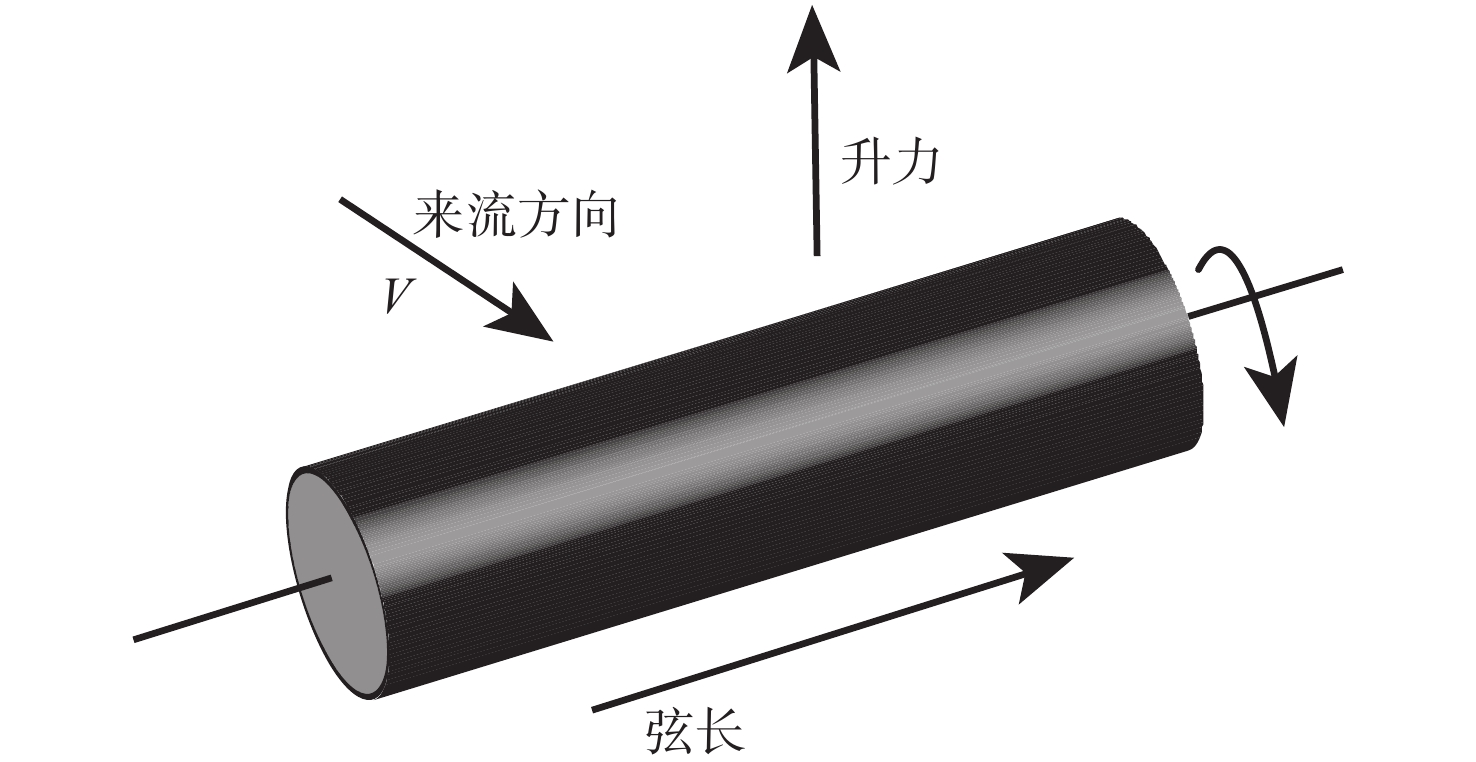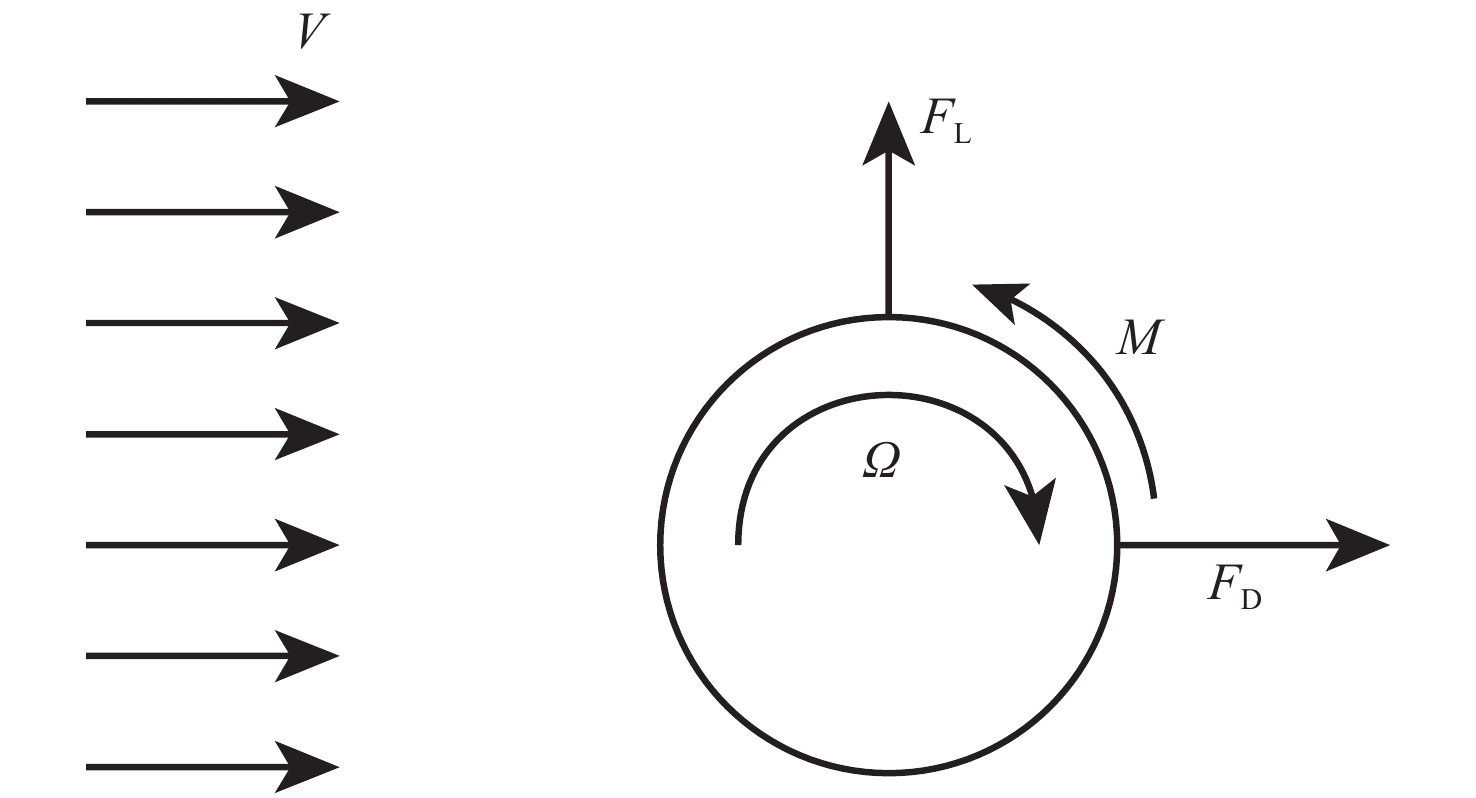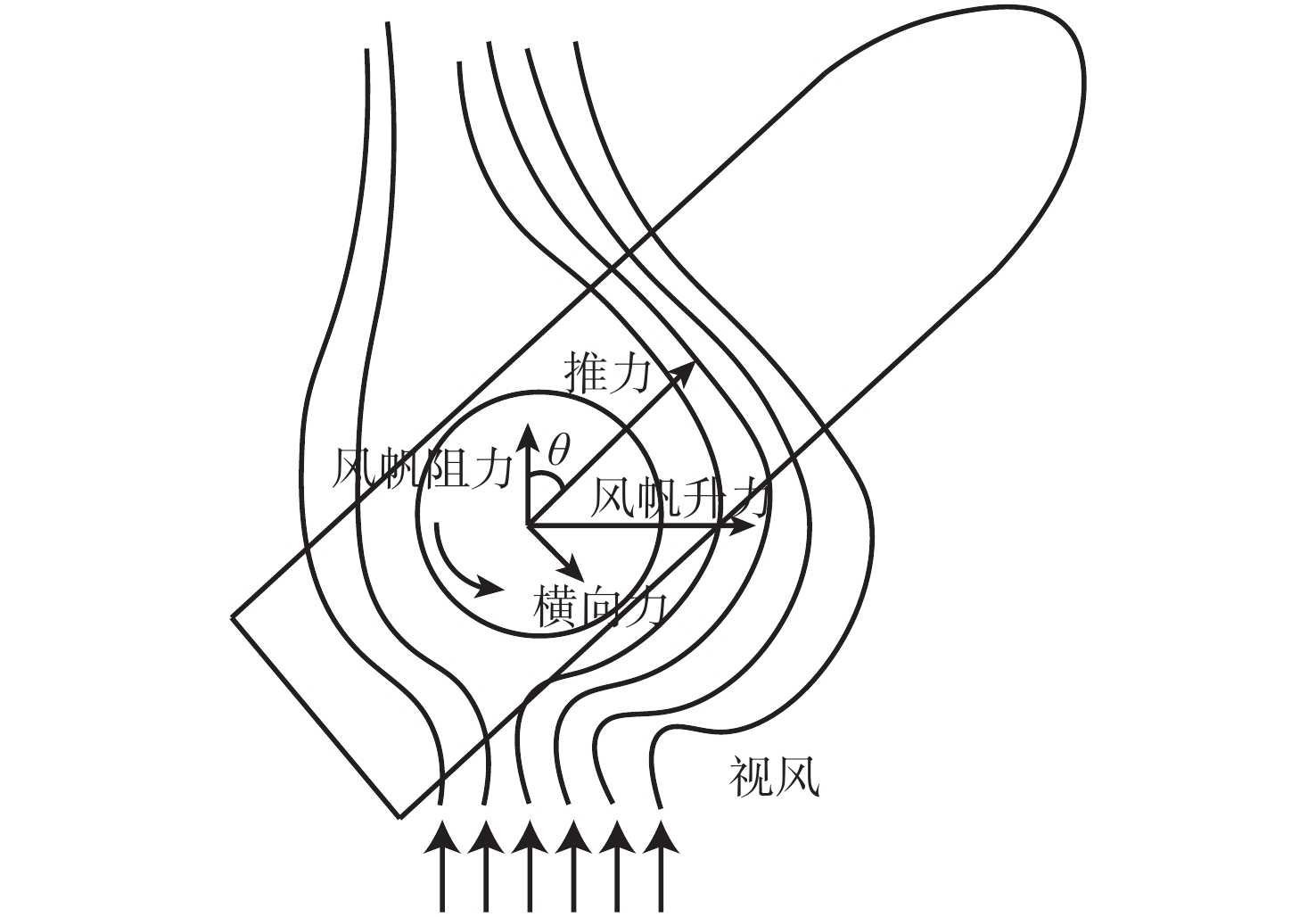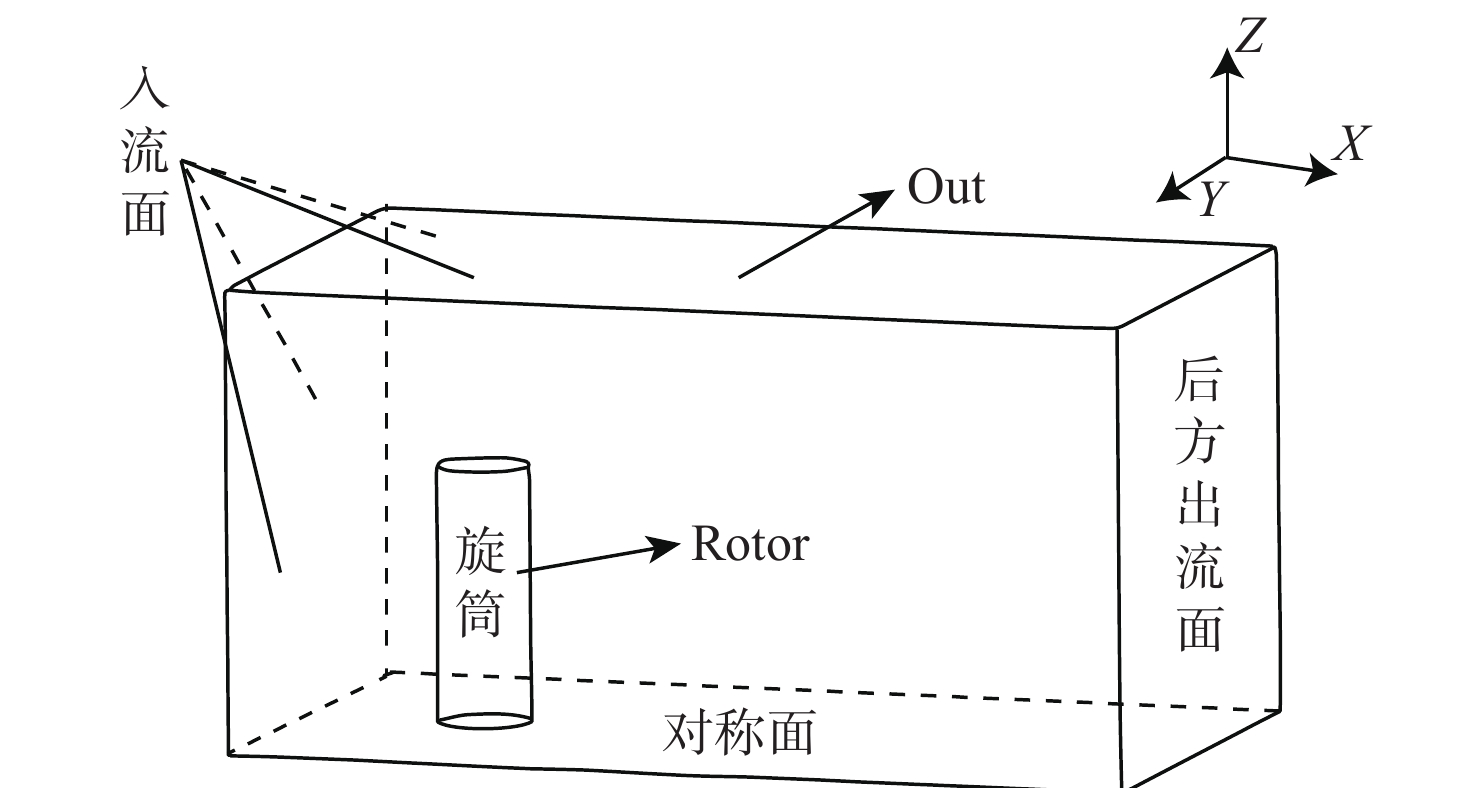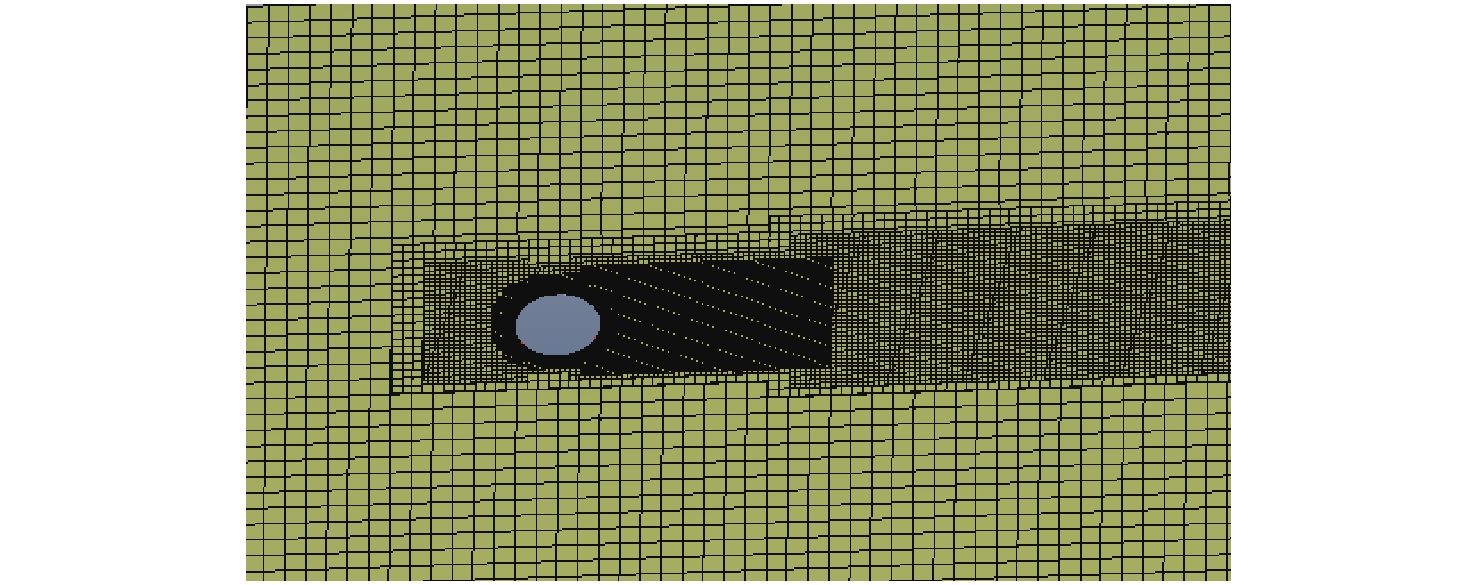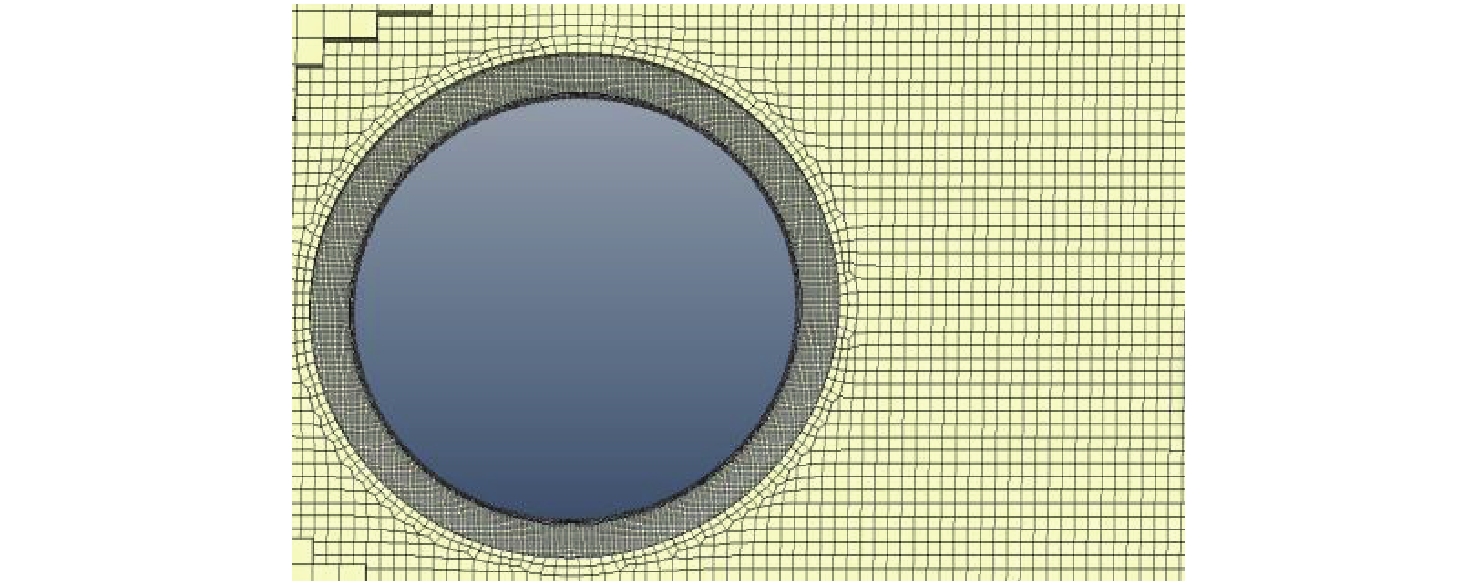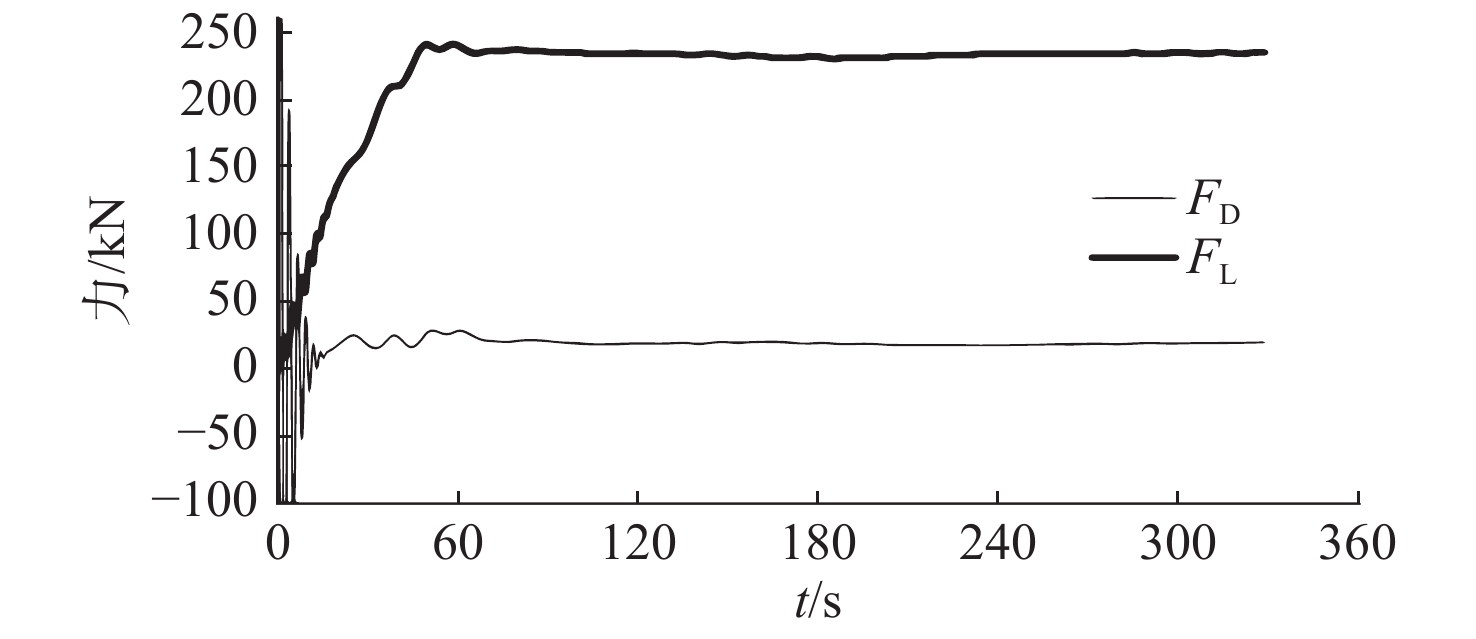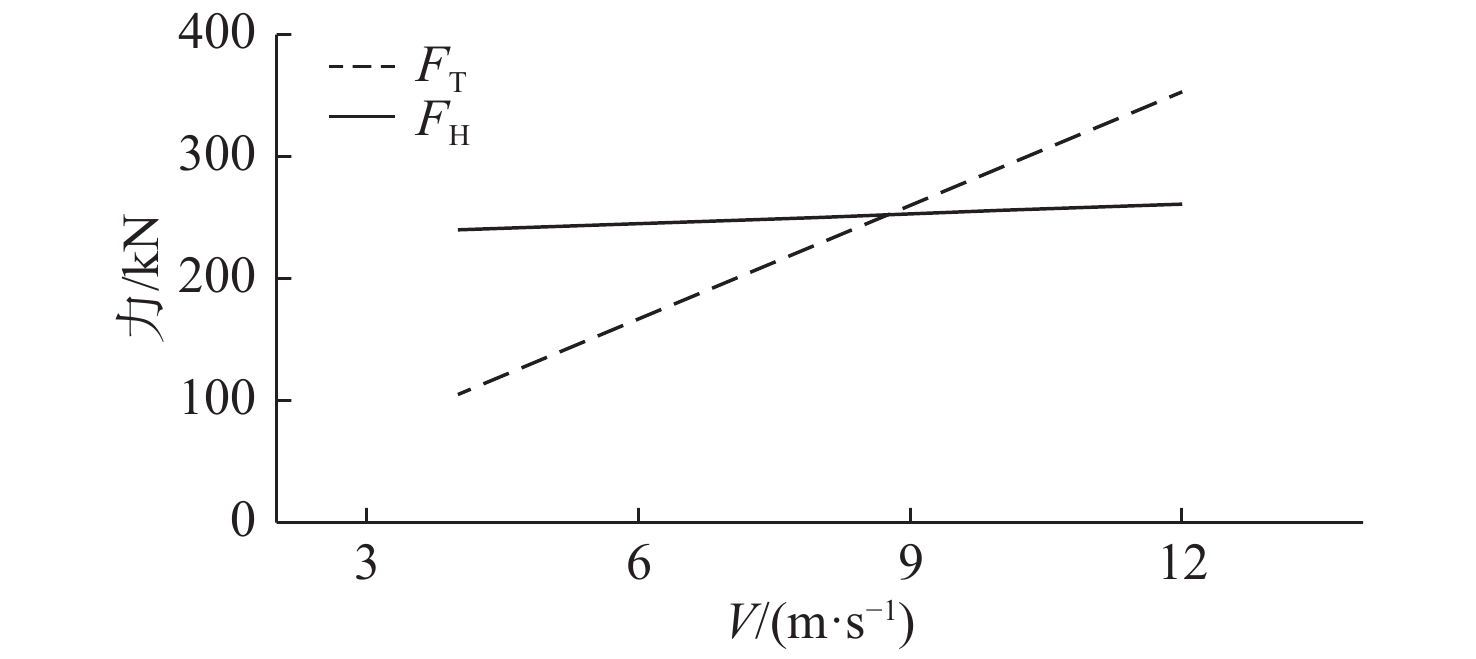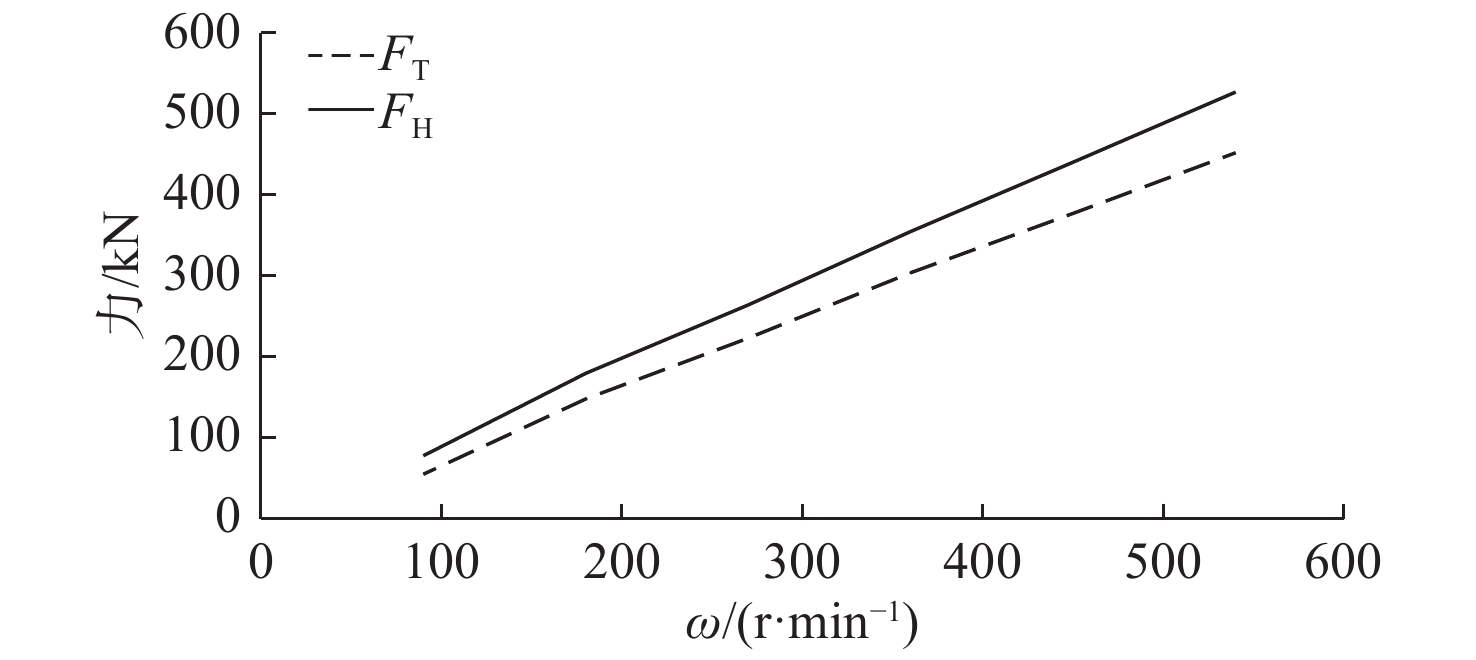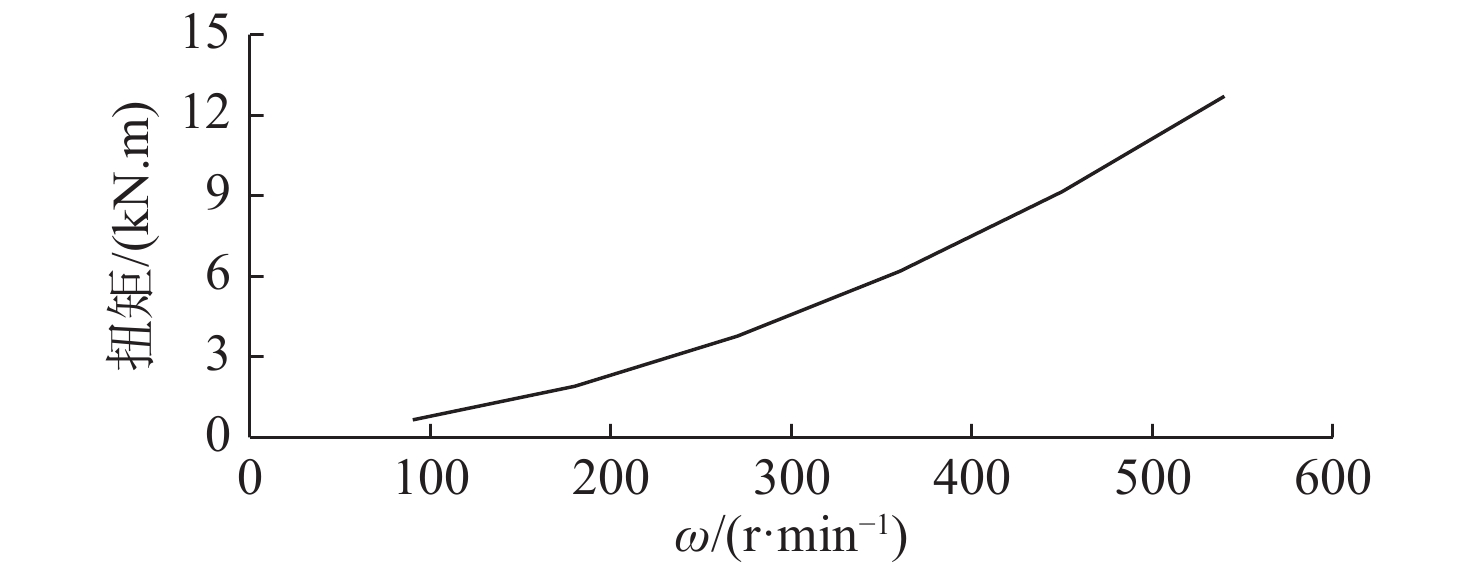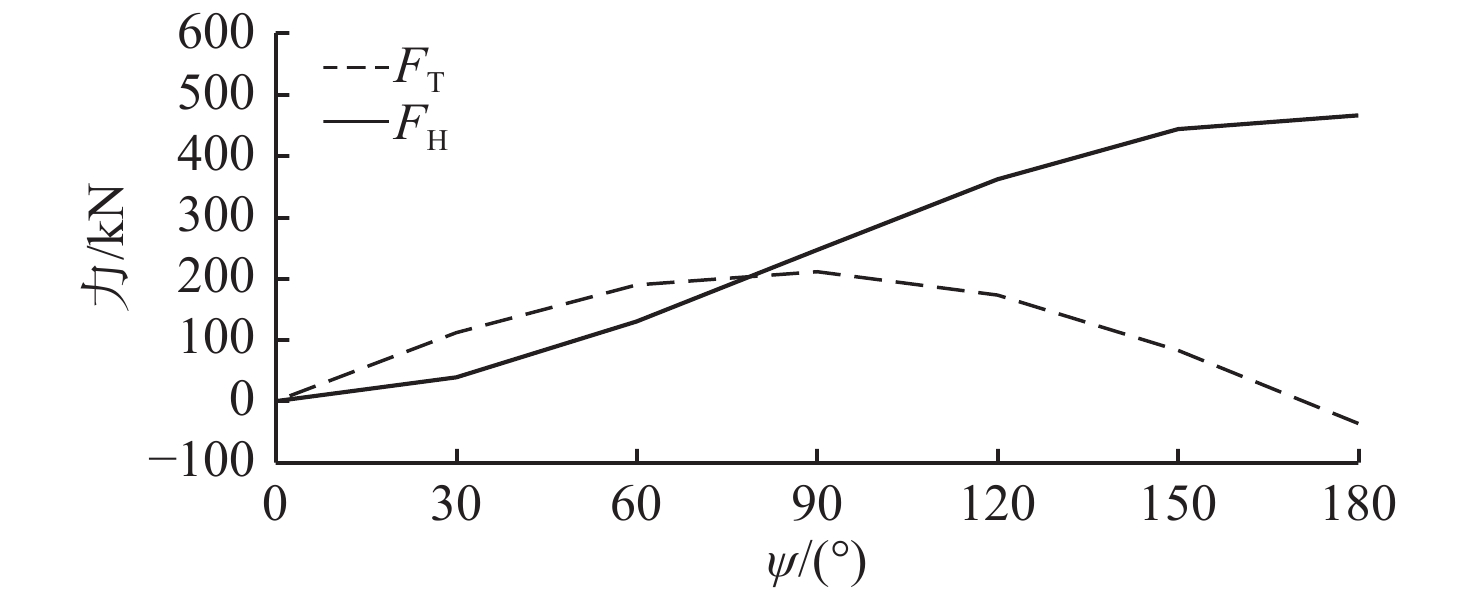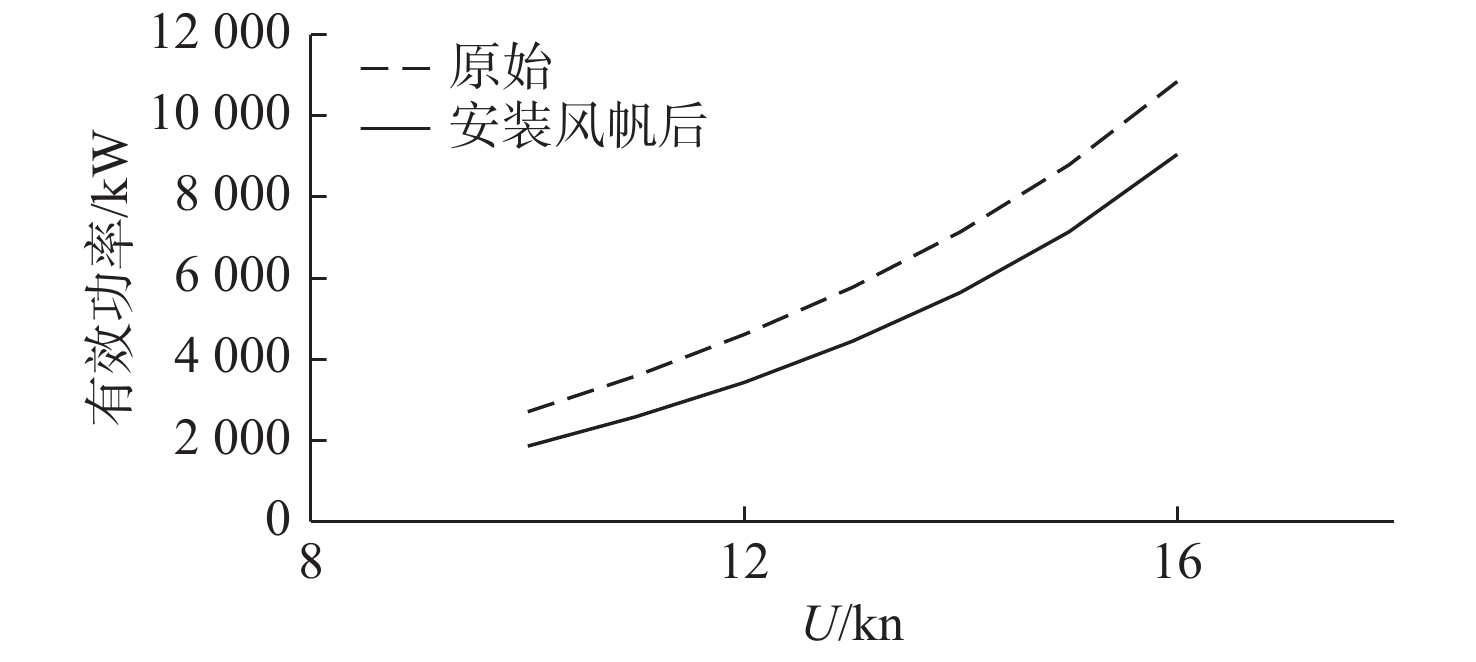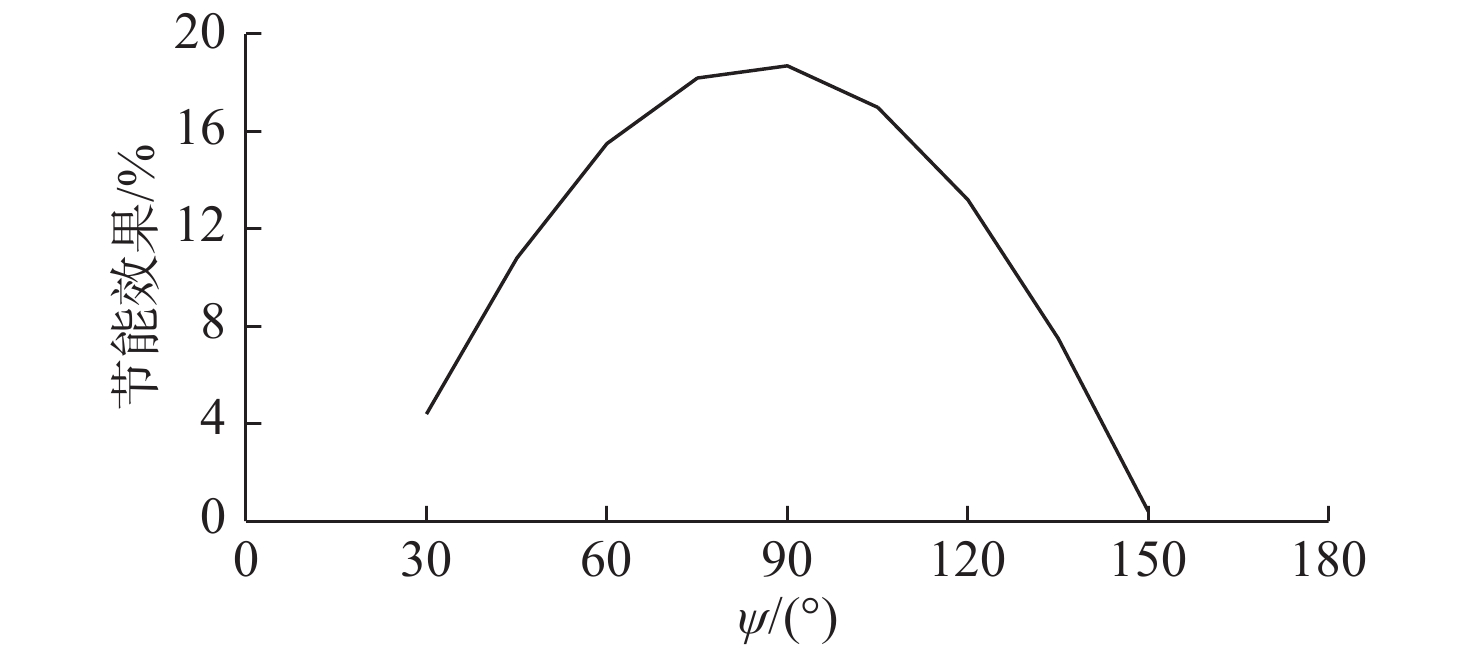Characteristic analysis of Magnus rotating marine energy saving device
-
摘要:目的 船舶助力航行设施可降低航运成本,提高经济效益,一定程度上还可改善海洋环境。基于Magnus效应原理,通过数值模拟方法,研究一种船舶助力航行设施(旋筒风帆)在风场中的力学性能。方法 分析风帆推力、横向力,以及旋筒所需驱动扭矩随旋筒的转速、风速、风向角的变化规律,并以一艘安装有旋筒风帆的散货轮为对象,评估其节能效果。结果 结果表明:风帆产生的推力和横向力随风速及旋筒转速的增加而增大; 当风向角为90°时,节能效果最好,但推力在到达峰值后会逐渐减小,风帆节能效果随风向角变化;驱动旋筒旋转会消耗功率,在产生推力的同时也会产生使船舶偏航的横向力。结论 研究结果可为船舶旋筒风帆优化设计提供一定的技术支持。Abstract:Objectives Ship assisted navigation facilities can not only reduce the shipping cost and improve the economic benefits, but also improve the marine environment to some extent. The mechanical properties of rotor sail in the wind field as a kind of ship assisted navigation facility in ships are numerically simulated based on Magnus effect principle.Methods The variation rules of the thrust, lateral force and driving torque of the rotor sail with rotation speed, wind speed and wind direction angle are analyzed. A bulk carrier with rotor sails is taken as calculation case to assess the level of energy-saving.Results The results show that, the thrust and lateral force increase with the increase of wind speed and rotating speed, the highest level of energy-saving is achieved when the wind direction angle is nighty degrees, but the thrust reaches a peak value and then decreases gradually. The energy-saving varies with the wind direction angles, but driving the rotor sail requires power consumption and a lateral force will be produced as wind direction is nighty degrees which can cause the ship to yaw.Conclusions The results given in this paper can provide technical support for optimal design of the sail.
-
Keywords:
- Magnus effect /
- green ship /
- rotor sail /
- numerical simulation /
- energy saving assessment
-
-
[1] 符妃. 我国海洋工程装备发展现状及对策研究[J]. 中国设备工程, 2020(13): 213–214. FU F. Research on the development status and countermeasures of marine engineering equipment in China[J]. China Plant Engineering, 2020(13): 213–214 (in Chinese).
[2] 曹凤富. 浅谈船舶节能减排对改善海洋环境的重要性[J]. 中国设备工程, 2019(13): 207–208. CAO F F. The recovering of the importance of ship energy conservation and emission reduction to improve marine environment[J]. China Plant Engineering, 2019(13): 207–208 (in Chinese).
[3] LIU X, TIAN G, FATHOLLAHI-FARD A M, et al. Evaluation of ship's green degree using a novel hybrid approach combining group fuzzy entropy and cloud technique for the order of preference by similarity to the ideal solution theory[J]. Clean Technologies and Environmental Policy, 2020, 22(2): 493–512. doi: 10.1007/s10098-019-01798-7
[4] 马运义. 发展绿色舰船, 抢占未来舰船发展制高点[J]. 中国舰船研究, 2016, 11(1): 13–18, 26. MA Y Y. Developing green ships for domination in future ship development[J]. Chinese Journal of Ship Research, 2016, 11(1): 13–18, 26 (in Chinese).
[5] 李百齐, 程红蓉. 关于EEDI衡准基线的研究[J]. 中国造船, 2010, 51(4): 51–57. LI B Q, CHENG H R. Study on EEDI baseline[J]. Shipbuilding of China, 2010, 51(4): 51–57 (in Chinese).
[6] 李百齐, 程红蓉. 关于EEDI衡准基面的研究[J]. 中国造船, 2011, 52(2): 34–39. LI B Q, CHENG H R. Study on EEDI base surface[J]. Shipbuilding of China, 2011, 52(2): 34–39 (in Chinese).
[7] 张彦, 黄靖晨, 李慧媛. 船舶清洁能源利用与航线优化的协同性[J]. 中国航海, 2018, 41(1): 109–112. ZHANG Y, HUANG J C, LI H Y. Synergy of marine clean energy with route optimization[J]. Navigation of China, 2018, 41(1): 109–112 (in Chinese).
[8] 许宇彤. 基于纵倾优化的船舶航行节能控制系统[J]. 科技与创新, 2020(10): 31–33. XU Y T. Ship navigation energy saving control system based on trim optimization[J]. Science and Technology & Innovation, 2020(10): 31–33 (in Chinese).
[9] 陆超, 崔敬玉, 孟凡华, 等. 高速船型融合特型球鼻艏的多方案优化设计[J]. 中国舰船研究, 2020, 15(3): 54–60. LU C, CUI J Y, MENG F H, et al. Multi-plan optimization design of high-speed hull form fusion special type bulbous bow[J]. Chinese Journal of Ship Research, 2020, 15(3): 54–60 (in Chinese).
[10] 万德成, 缪爱琴, 赵敏. 基于水动力性能优化的船型设计研究进展[J]. 水动力学研究与进展(A辑), 2019, 34(6): 693–712. WAN D C, MIAO A Q, ZHAO M. Research progress in ship design based on optimization of hydrodynamic performances[J]. Chinese Journal of Hydrodynamics (Ser.A), 2019, 34(6): 693–712 (in Chinese).
[11] 许璐荣, 万德成. 毂帽鳍水动力性能数值研究[J]. 中国舰船研究, 2018, 13(增刊 1): 15–21. XU L R, WAN D C. Numerical research on hydrodynamic characteristics of propeller boss cap fins[J]. Chinese Journal of Ship Research, 2018, 13(Supp 1): 15–21 (in Chinese).
[12] 汪洋, 王志华, 陈爱国. 风帆助航的研究与应用综述[J]. 广州航海学院学报, 2017, 25(1): 5–8, 27. WANG Y, WANG Z H, CHEN A G. Overview on the study and applications of propulsion with sail assistance[J]. Journal of Guangzhou Maritime Institute, 2017, 25(1): 5–8, 27 (in Chinese).
[13] 闫亚胜. 风能在现代船舶风翼助航中应用研究[J]. 海洋工程装备与技术, 2019, 6(增刊 1): 389–394. YAN Y S. Research of wind energy using in modern sail-assisted vessel[J]. Ocean Engineering Equipment and Technology, 2019, 6(Supp 1): 389–394 (in Chinese).
[14] SEIFERT J. A review of the Magnus effect in aeronautics[J]. Progress in Aerospace Sicences, 2012, 55(5): 17–45.
[15] 程友良, 刘鑫, 汪辉. Magnus圆柱叶轮的水动力学特性及效率研究[J]. 水动力学研究与进展(A辑), 2019, 34(3): 361–366. CHEN Y L, LIU X, WANG H. Study on hydrodynamic characteristic and efficiency of the Magnus cylindrical blade impeller[J]. Chinese Journal of Hydrodynamics(Ser.A), 2019, 34(3): 361–366 (in Chinese).
[16] 朱弘. 基于马格努斯效应的风力机叶片流场的数值模拟[D]. 哈尔滨: 哈尔滨工业大学, 2010. ZHU H. Flow field numerical simulation of windmill blade based on Magnus effect[D]. Harbin: Harbin Institute of Technology, 2010 (in Chinese).
[17] 肖中云, 缪涛, 陈波, 等. 船尾形状对旋成体马格努斯效应的影响[J]. 航空学报, 2018, 39(6): 38–47. XIAO Z Y, MIAO T, CHEN B, et al. Influence of boattail shape on Magnus effects of a spinning rotating body[J]. Acta Aeronautica et Astronautica Sinica, 2018, 39(6): 38–47 (in Chinese).
[18] 李欣, 王怡, 周熲, 等. 旋转风筒节能装置在大型远洋船上的应用分析[J]. 船舶工程, 2019, 41(12): 42–45, 137. LI X, WANG Y, ZHOU J, et al. Analysis on application of wind rotor on large ocean-going ships[J]. Ship Engineering, 2019, 41(12): 42–45, 137 (in Chinese).



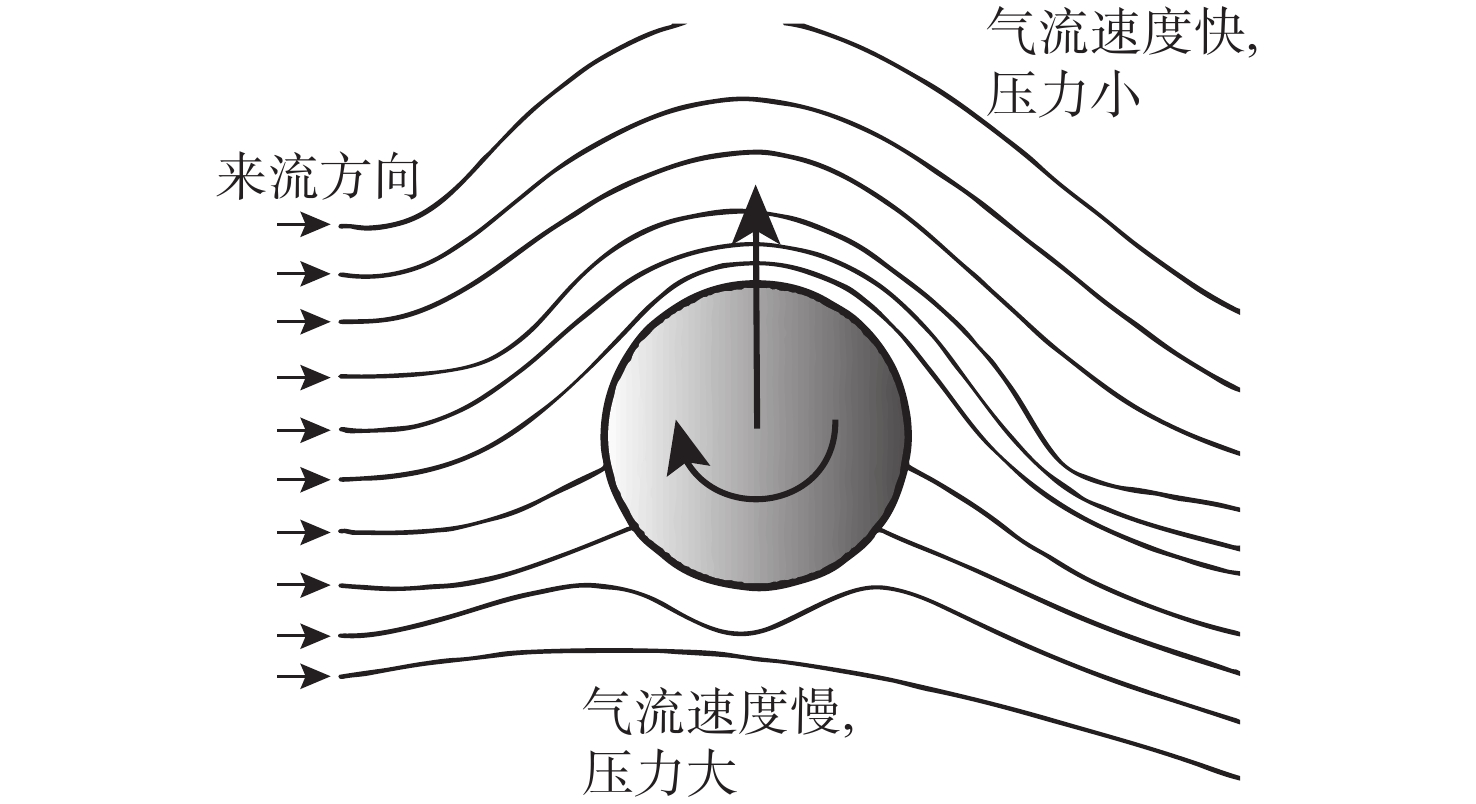
 下载:
下载:
